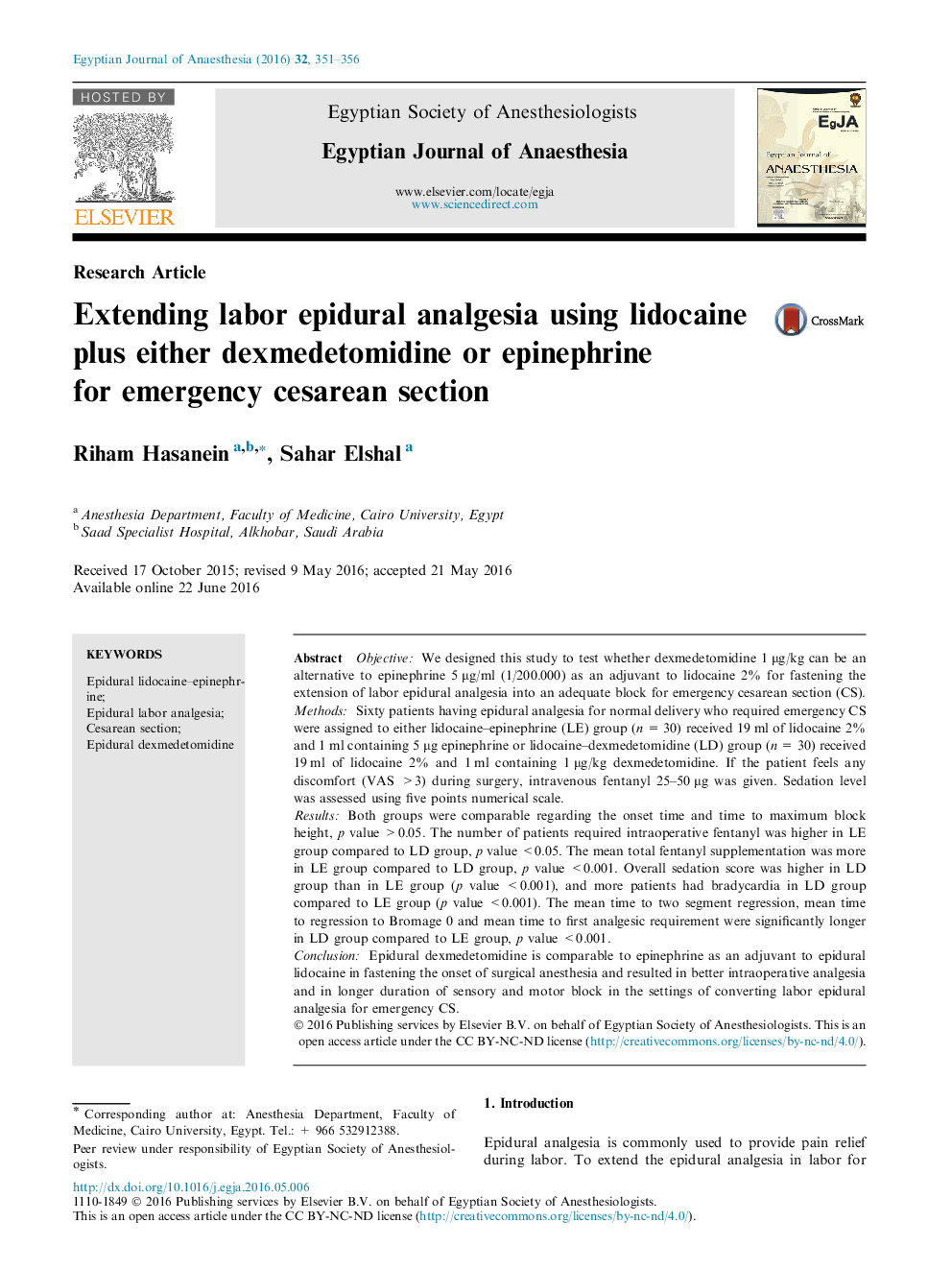| Article ID | Journal | Published Year | Pages | File Type |
|---|---|---|---|---|
| 2756125 | Egyptian Journal of Anaesthesia | 2016 | 6 Pages |
ObjectiveWe designed this study to test whether dexmedetomidine 1 μg/kg can be an alternative to epinephrine 5 μg/ml (1/200.000) as an adjuvant to lidocaine 2% for fastening the extension of labor epidural analgesia into an adequate block for emergency cesarean section (CS).MethodsSixty patients having epidural analgesia for normal delivery who required emergency CS were assigned to either lidocaine–epinephrine (LE) group (n = 30) received 19 ml of lidocaine 2% and 1 ml containing 5 μg epinephrine or lidocaine–dexmedetomidine (LD) group (n = 30) received 19 ml of lidocaine 2% and 1 ml containing 1 μg/kg dexmedetomidine. If the patient feels any discomfort (VAS >3) during surgery, intravenous fentanyl 25–50 μg was given. Sedation level was assessed using five points numerical scale.ResultsBoth groups were comparable regarding the onset time and time to maximum block height, p value >0.05. The number of patients required intraoperative fentanyl was higher in LE group compared to LD group, p value <0.05. The mean total fentanyl supplementation was more in LE group compared to LD group, p value <0.001. Overall sedation score was higher in LD group than in LE group (p value <0.001), and more patients had bradycardia in LD group compared to LE group (p value <0.001). The mean time to two segment regression, mean time to regression to Bromage 0 and mean time to first analgesic requirement were significantly longer in LD group compared to LE group, p value <0.001.ConclusionEpidural dexmedetomidine is comparable to epinephrine as an adjuvant to epidural lidocaine in fastening the onset of surgical anesthesia and resulted in better intraoperative analgesia and in longer duration of sensory and motor block in the settings of converting labor epidural analgesia for emergency CS.
